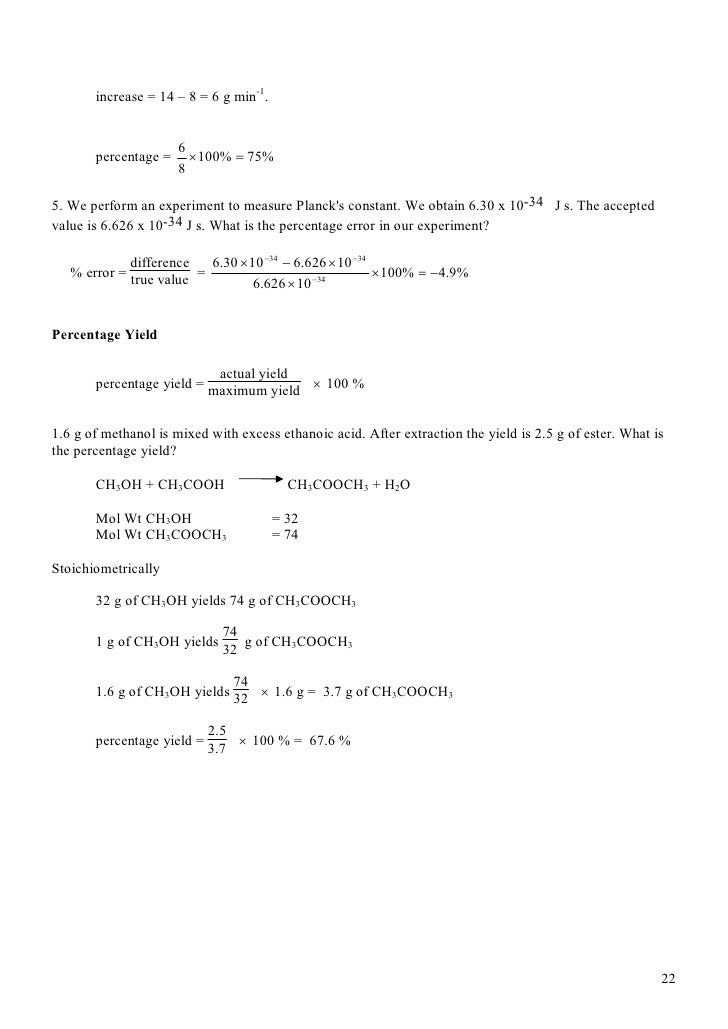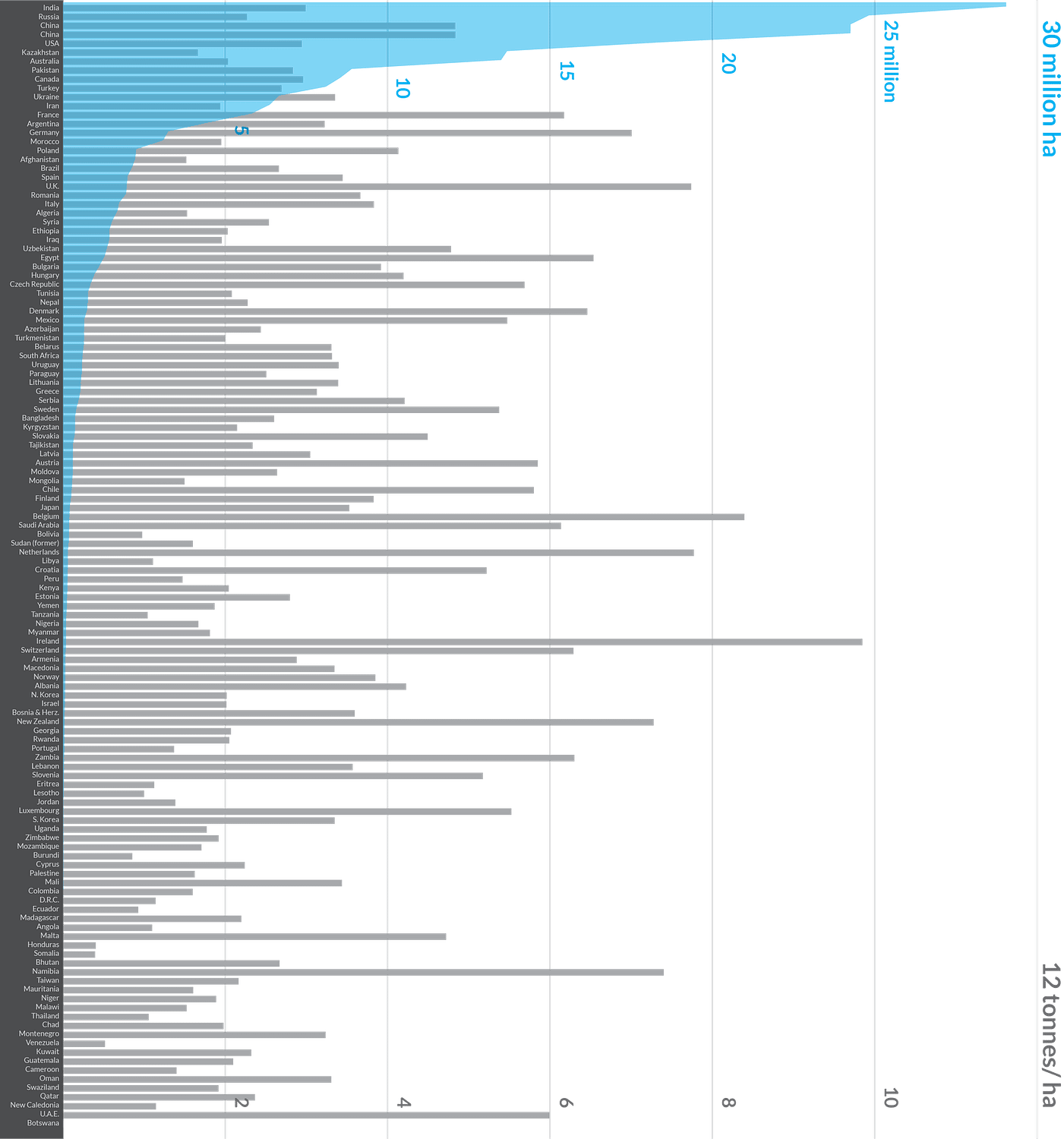The world of pharmaceutical production is an expensive one. Many drugs have several steps in their synthesis and use costly chemicals. A great deal of research takes place to develop better ways to make drugs faster and more efficiently. Analysis of how much of a compound is produced in any given reaction is an important part of cost control.
Percent Yield
Consider the reaction, 2C2H6 + 7O2 - 4CO2 + 6H2O. You are asked to prepare 14.7 g of CO2 according to this equation. If the percent yield is 95%, what amount of ethane should you use to prepare the CO2? Skill Practice 3 Name: Date: Hour: 1. Explain why compounds are always homogeneous, but mixtures can be either homogeneous or heterogeneous. With a compound (such as salt or sugar), one microscopic portion has the same composition as another microscopic portion.
Chemical reactions in the real world do not always go exactly as planned on paper. In the course of an experiment, many things will contribute to the formation of less product than would be predicted. Besides spills and other experimental errors, there are often losses due to an incomplete reaction, undesirable side reactions, etc. Chemists need a measurement that indicates how successful a reaction has been. This measurement is called the percent yield.
To compute the percent yield, it is first necessary to determine how much of the product should be formed based on stoichiometry. This is called the theoretical yield, the maximum amount of product that could be formed from the given amounts of reactants. The actual yield is the amount of product that is actually formed when the reaction is carried out in the laboratory. The percent yield is the ratio of the actual yield to the theoretical yield, expressed as a percentage:
[text{Percent Yield} = frac{text{Actual Yield}}{text{Theoretical Yield}} times 100%]
Percent yield is very important in the manufacture of products. Much time and money is spent improving the percent yield for chemical production. When complex chemicals are synthesized by many different reactions, one step with a low percent yield can quickly cause a large waste of reactants and unnecessary expense.
Typically, percent yields are understandably less than (100%) because of the reasons indicated earlier. However, percent yields greater than (100%) are possible if the measured product of the reaction contains impurities that cause its mass to be greater than it actually would be if the product was pure. When a chemist synthesizes a desired chemical, he or she is always careful to purify the products of the reaction.
Example (PageIndex{1})
Potassium chlorate decomposes upon slight heating in the presence of a catalyst, according to the reaction below.
[2 ce{KClO_3} left( s right) rightarrow 2 ce{KCl} left( s right) + 3 ce{O_2} left( g right)]
In a certain experiment, (40.0 : text{g} : ce{KClO_3}) is heated until it completely decomposes. What is the theoretical yield of oxygen gas? The experiment is performed, the oxygen gas is collected, and its mass is found to be (14.9 : text{g}). What is the percent yield for the reaction?
Solution

First, we will calculate the theoretical yield based on the stoichiometry.
Step 1: List the known quantities and plan the problem.
Known
- Given: Mass of (ce{KClO_3} = 40.0 : text{g})
- Molar mass (ce{KClO_3} = 122.55 : text{g/mol})
- Molar mass (ce{O_2} = 32.00 : text{g/mol})
Unknown
- Theoretical yield (ce{O_2} = ? : text{g})
Apply stoichiometry to convert from the mass of a reactant to the mass of a product:
[text{g} : ce{KClO_3} rightarrow text{mol} : ce{KClO_3} rightarrow text{mol} : ce{O_2} rightarrow text{g} : ce{O_2} nonumber]
Step 2: Solve.

[40.0 : text{g} : ce{KClO_3} times frac{1 : text{mol} : ce{KClO_3}}{122.55 : text{g} : ce{KClO_3}} times frac{3 : text{mol} : ce{O_2}}{2 : text{mol} : ce{KClO_3}} times frac{32.00 : text{g} : ce{O_2}}{1 : text{mol} : ce{O_2}} = 15.7 : text{g} : ce{O_2} nonumber]
The theoretical yield of (ce{O_2}) is (15.7 : text{g}).
Step 3: Think about your result.
The mass of oxygen gas must be less than the (40.0 : text{g}) of potassium chlorate that was decomposed.
Now we will use the actual yield and the theoretical yield to calculate the percent yield.
Step 1: List the known quantities and plan the problem.
Known
- Actual yield (= 14.9 : text{g})
- Theoretical yield (= 15.7 : text{g})
Unknown
- Percent yield (= ? %)
[text{Percent Yield} = frac{text{Actual Yield}}{text{Theoretical Yield}} times 100% nonumber]
Use the percent yield equation above.
Step 2: Solve.
[text{Percent Yield} = frac{14.9 : text{g}}{15.7 : text{g}} times 100% = 94.9% nonumber]
Percent Yield Skill Practice 34 Questions

Step 3: Think about your result.
Since the actual yield is slightly less than the theoretical yield, the percent yield is just under (100%).
Percent Yield Skill Practice 34 Class
Summary
Percent Yield Skill Practice 34 Plus
Theoretical yield is calculated based on the stoichiometry of the chemical equation. The actual yield is experimentally determined. The percent yield is determined by calculating the ratio of actual yield/theoretical yield.
Percent Yield Skill Practice 34
Contributors and Attributions
CK-12 Foundation by Sharon Bewick, Richard Parsons, Therese Forsythe, Shonna Robinson, and Jean Dupon.